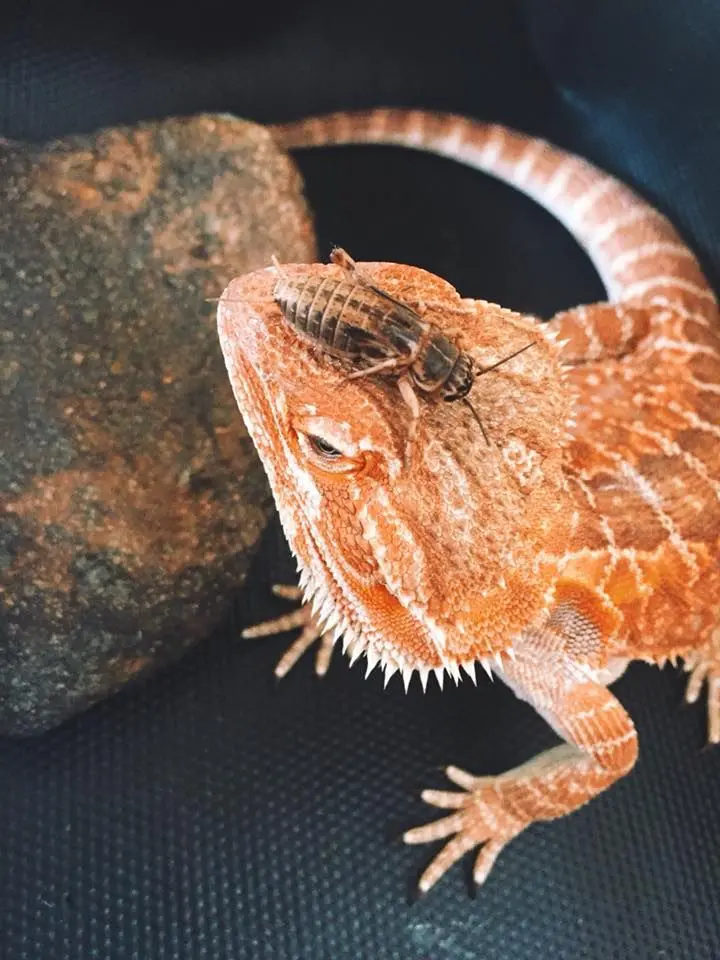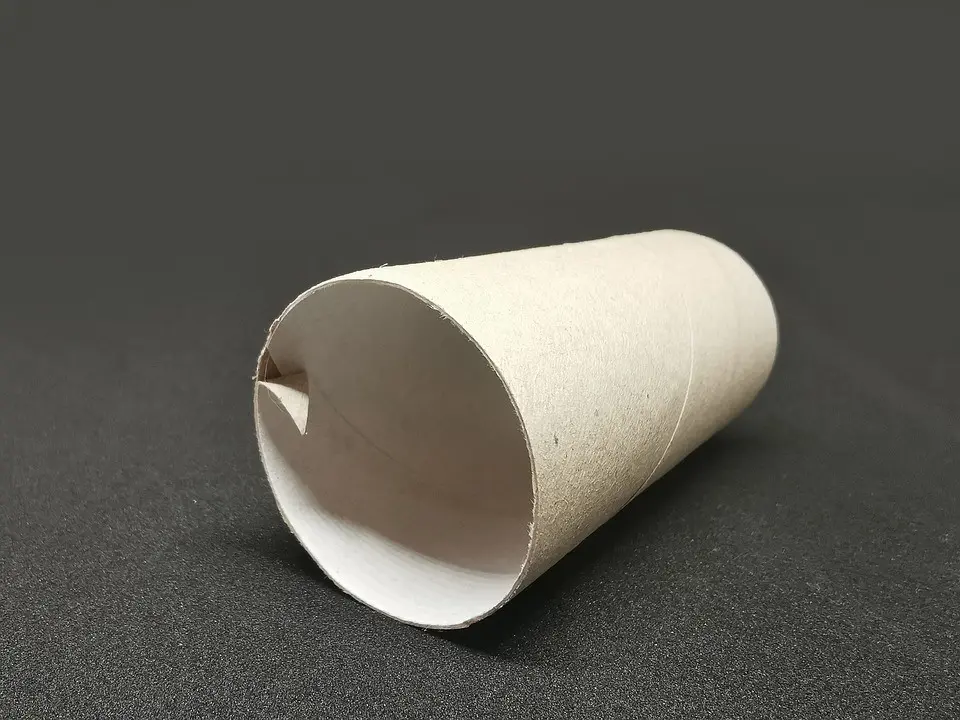Most bearded dragon owners will purchase crickets in bulk, rather than buying multiple tubs of crickets over a short period.
The problem is that it’s not uncommon for reptile pet owners to find their crickets start to die within days of purchase, which is often due to them not being taken care of properly.
Feeder crickets can live up to eight or ten weeks. They have a short lifespan of which only around three weeks is spent as an adult cricket, which is able to breed. It’s important you only feed your bearded dragon with healthy crickets.
Continue reading to find out how to keep crickets alive for bearded dragons.
Why Do You Need To Keep Crickets Alive
As you watch the crickets die off, you may be inclined to give your bearded dragon a few dead ones, rather than waste them. It is imperative that the crickets are fed to your dragon alive.

Lacking Nutrition
As soon as a cricket dies, its body stops retaining water, losing all nutritional value. When the cricket has lost its nutritional value, there is no point in feeding it, as it will not benefit your bearded dragon in any way.
Toxin Release
Dead crickets also attract parasites and bacteria, both of which will eat on the dead cricket, which can be dangerous for your reptilian pet.
Healthy Crickets
Crickets are a popular source of nutrition for bearded dragons, offering ample protein and calcium. An adult cricket provides (according to flukerfarms):
- Moisture 77.58%
- Protein 15.88%
- Fat 3.46%
- Fiber 2.4%
- Calcium .2%
- Phosphorus .95%
How To Keep Crickets Alive For Bearded Dragons
Buy Healthy Crickets
You can buy feeder crickets from your local pet store and online with options from small quantities to large bulk purchases of one thousand crickets or more.
Healthy crickets are active, moving around the enclosure. They do chirp, so bear this in mind when setting up your cricket enclosure.

Bearded dragons should not eat dead crickets
Minimize Transport Time
When you buy your feeder crickets, you want to get them back home quickly to reduce the risk of death.
If you purchase from your local pet store, you will bring them home in a tub or plastic box. Transport time should be minimized.
A good rule of thumb is to purchase from the pet shop that is nearest to your home.
If you choose to purchase online, look for reputable cricket breeders that are close to your location.
This way shipping will be quick, increasing the chance of receiving healthy crickets.
When shipped, crickets usually arrive in a secure box or tub.
Set Up A Cricket Keeper
Storage Container Material and Size
There is no set recommendation when it comes to the material of the storage container you want to use to store your live feeder crickets.
The most important aspect is to ensure it has smooth sides, which makes it impossible for your feeder crickets to jump out. Glass and plastic are both recommended.
The recommendation is a one-gallon storage container for up to one hundred crickets, which means if you are buying in bulk and are receiving one thousand crickets, you will need a minimum of a ten-gallon storage container.
Ventilation
If you have chosen a storage box that doesn’t have any ventilation, then ensure you cut small holes that ensure the crickets get ample oxygen.
Tape the holes with thin netting, which is thin enough to not allow any crickets to escape.
The last thing you want is your feeder crickets getting loose in your home.
If there isn’t any, you will also have to cut some holes in the tank so your little critters can get oxygen properly.
Then tape the holes with a very thin wire nettling, at least thin enough for the crickets not to be able to go through it.
Related – How to get crickets out of a bearded dragon cage.
Careful When Buying Cricket Keeper Tanks
Most pet stores will sell a cricket keeper container, which may seem the easiest solution to start, but be careful as they get crowded, which means some of the crickets will find themselves without food, causing them to die quickly.
Even the largest containers you purchase at your pet store are only really suitable for around one hundred crickets, anything more and it becomes too crowded.
If you plan on breeding your own crickets, then making a DIY container of a larger size is the best solution.
Type of Environment
It is important when you set up your cricket enclosure to bear in mind that they prefer dark spaces.
Egg crates are effective in helping you provide the hiding spaces the crickets need, reducing them all heading to the same small space.
The inside of toilet rolls or towel rolls are also great to create hiding spaces.

Egg crates and toilet rolls are great options to create hiding spaces
Temperature
Crickets are great at dealing with heat, but they don’t do well in the cold and will go into a hibernation-type state, causing them to become dormant.
Once you allow them to warm up to room temperature, they will get active.
This is often seen when you purchase online and your crickets have been shipped to your home.
Once you have your crickets to room temperature, you want to keep their enclosure at optimum temperature to help them function properly.
Crickets prefer a temperature range of between 70ºF and 75ºF (22ºC). They should not be exposed to high humidity, direct sunlight, or drafts.
Keep the Container Clean
Keep the storage container clean. It can help the crickets live longer and stay healthier, ensuring your bearded dragon gets all the nutrition it needs.
Don’t forget to check the enclosure daily, removing any dead crickets and waste.
Never use chemicals when cleaning, your feeder crickets are very sensitive.
A mild hot soapy water is the best way to clean the storage container before you place the crickets into it.
Setting Up Your Cricket Storage Container
Crickets do better in larger environments, so make or buy the largest container you can house them in.
Ensure it has ample ventilation with a secure lid, reducing the risk of any crickets escaping.
As mentioned previously, the enclosure can be glass or plastic.
Clean the storage container with mild soapy water, rinse well, and allow to dry before placing any crickets into it.
Tear up some egg crates and place them in the tank, offering ample hiding places.
Placing the pieces of the egg carton in the bottom of the enclosure creates a welcome habitat, helping the crickets get the privacy they need. Without ample space, it’s not uncommon for crickets to fight each other for territory.
Don’t forget to add a shallow water dish to the storage container.
Choose a dark area in your home that has a steady temperature of between 70ºF and 75ºF.
If the temperature drops too low, your crickets will go into hibernation and eventually die. They will eat each other.
If the temperatures get too high, then your feeder crickets will have a shorter lifespan.
Feeding Crickets
When it comes to feeding your feeder crickets, you want to gut load them, which means feeding them nutritious foods, which they then pass on to your bearded dragon.


There are one-packed cricket foods which have been formulated for gut loading, but there are plenty of other foods you can feed, these include:
- Dark leafy greens (mustard greens, kale, collard greens)
- Tropical fish flakes
- Sweet potato
- Squash
- Orange
- Carrot
- Apple
- Alfalfa
- Baby rice cereal
- Potato with peels
- Dry cat food
- Wheat germ
- Pre-packed reptile foods
You can feed your crickets with fruits and vegetables, even if they are eating commercial cricket food, offering extra supplementation (eg. bee pollen).
When feeding homemade food mixes, ensure you provide a variety of foods, and don’t forget to add some reptile vitamin and calcium supplements to benefit your bearded dragon in the long run.
Summary
Feeder crickets don’t have to be hard work if you know what to do. Providing a large habitat with plenty of hiding spaces, keeping the habitat clean, and feeding your crickets a healthy diet is the best way to ensure your crickets stay alive and provide your pet with the nutritious meal it needs.